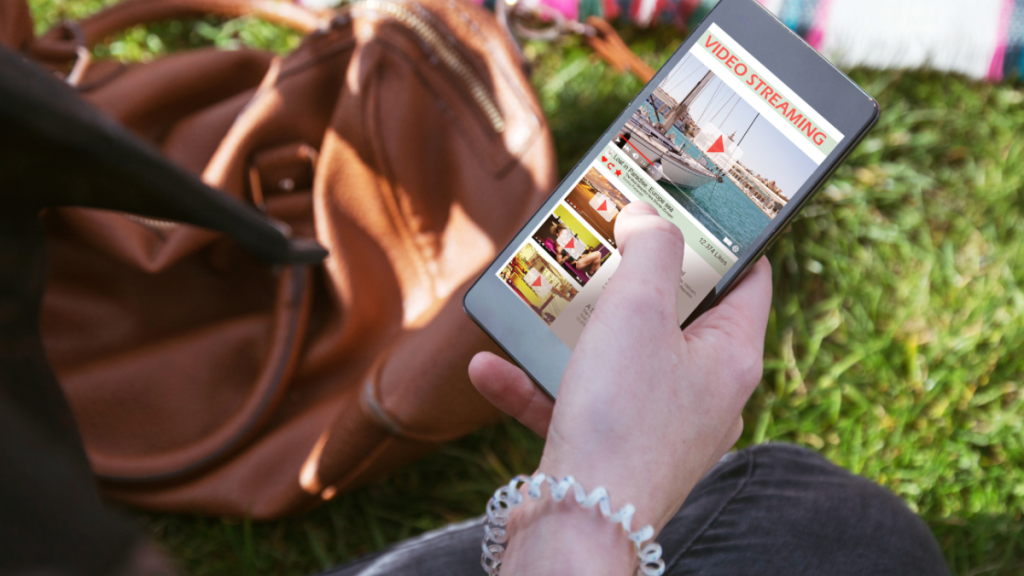In today’s fast-moving digital world, anyone with a smartphone has the power to become a content creator. Whether you’re a business professional, artist, or aspiring influencer, streaming with just a smartphone is no longer a compromise—it’s a strategic choice. With the right setup and approach, mobile streaming can match or even exceed expectations for quality and engagement. Here’s what you need to make it work effectively.
1. A Reliable Smartphone with a Good Camera
The first and most important tool is your smartphone. Most modern phones come with high-quality cameras that can shoot in HD or even 4K. Devices like the iPhone 15, Samsung Galaxy S24, or Google Pixel 8 have cameras capable of producing professional-level visuals. If your phone is more than three years old, consider upgrading for better video quality and battery life. Stability, low-light performance, and fast autofocus are key features that affect streaming quality.
2. Fast and Stable Internet Connection
Even the best camera won’t help if your internet is weak. A poor connection causes buffering, dropped frames, and lags that frustrate viewers. Use Wi-Fi when possible, but make sure it’s high-speed and consistent. If you’re streaming outdoors or on the move, a solid 5G connection is a good alternative. You can also use mobile hotspots, but test your upload speed in advance. For smooth streaming, aim for at least 5 Mbps upload speed, though higher is better.
3. Streaming App or Platform
To go live, you’ll need an app that connects to your streaming platform. Some platforms like Instagram Live, TikTok, and Facebook Live offer built-in tools. For more control and features, apps like Streamlabs, Prism Live Studio, or Larix Broadcaster allow you to stream to multiple platforms at once, add overlays, or adjust resolution settings. These apps are especially useful when using custom streaming solutions tailored to your brand or business.
Custom streaming solutions are tools or platforms developed specifically to meet unique needs, like private streaming for clients, live sales events, or tailored branding for professional creators. They often offer enhanced control over design, integrations, and audience analytics, which can be a game-changer for entrepreneurs and businesses streaming from a phone.
4. Audio Equipment for Clear Sound
Good audio matters just as much—sometimes even more—than good video. Built-in smartphone mics are okay for casual streams, but external microphones can drastically improve sound quality. Lavalier (clip-on) mics like the Rode SmartLav+ or wireless options like DJI Mic or Rode Wireless GO II provide clean, professional audio even in noisy environments. Most mics connect via the headphone jack or USB-C/Lightning port, so compatibility matters.
Clear audio is especially important if you’re delivering content like interviews, tutorials, or even a behind-the-scenes look at a live-action series production. Viewers will forgive a slightly shaky video, but not crackling or muffled audio.
5. Stabilizer or Tripod for Steady Video
Shaky footage is distracting and looks unprofessional. A tripod or gimbal stabilizer can instantly elevate your production value. Tripods are ideal for stationary streams like product demos or Q&As. Gimbals, like those from DJI or Zhiyun, are great for walking and talking, action shots, or on-the-go coverage of live events.
If you’re covering an event, showing off a location, or even documenting a live-action series in real time, a stabilizer makes a big difference in delivering cinematic, smooth footage.
6. Lighting for Professional Visuals
Lighting can transform your stream from amateur to pro. Natural light is your friend, but it’s not always reliable. A small ring light or portable LED panel can help you stay visible and sharp, especially in indoor or low-light settings. There are compact lighting setups that clip directly onto your smartphone or tripod.
For product reviews, tutorials, or any detailed content, proper lighting helps highlight key visuals and keeps your video looking polished.
7. Power Backup and Battery Management
Streaming can drain your battery fast. Always start with a full charge and keep a power bank or charger handy. Long-form content, such as an hour-long stream or a multi-part behind-the-scenes look at a live-action series, will require power management. Some creators even use phone cooling fans to avoid overheating during long sessions.
If you’re planning extended live broadcasts, consider having an external power source plugged in while streaming to ensure your phone doesn’t shut down mid-session.
8. Planning and Content Strategy
Even the best tech setup won’t help if your content isn’t compelling. Before going live, plan what you want to say or show. Write down key points or create a brief outline. Consider your audience: what do they want to learn, experience, or interact with?
Whether you’re streaming a live tutorial, offering behind-the-scenes access to a creative project, or discussing the making of a live-action series, having a clear focus will keep your viewers engaged and more likely to return.
9. Engagement Tools and Post-Stream Strategy
Live streaming isn’t just about broadcasting—it’s about interaction. Respond to comments in real time, encourage questions, and use calls to action. Ask viewers to follow, share, or check out a link. After the stream, save the video, repurpose it into clips, and share it on other platforms to extend its reach.
If you’re using custom streaming solutions, you may have access to automated chat features, viewer analytics, and post-stream insights to help you improve future broadcasts.
Conclusion
Streaming with just a smartphone is no longer a limitation—it’s an opportunity. With the right tools, strategy, and consistency, anyone can create high-quality, engaging live streams. Whether you’re a solo creator or part of a team working on a live-action series, mobile streaming gives you direct access to your audience anytime, anywhere. Start with the basics, upgrade where it matters, and make each stream count.




